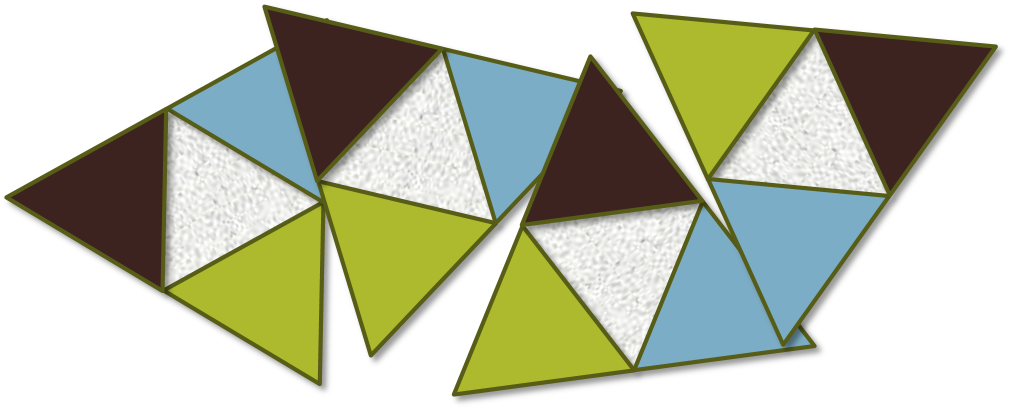Grant writing Templates & Resources
Grant Templates & Outlines
Specific Aims template
Writing your NIH Specific Aims page can be tough. How do I get started? What is the flow? How do I convince the reviewer that what I’m doing fills an important gap? This template combines templates from Drs. Morgan Giddings, Martie Thompson, and Erica Whitney and ideas from many.
To write your Specific Aims page you need to be crystal clear about your Grant Story, so do that first!
Specific Aims planning matrix
Use this ‘fill in the blanks’ form to gather information for your Aims page. Print it out, and take it and a pencil to your local coffee shop.
Significance outline
The Significance (or similar) section tells your grant story in greater detail, and different proportions, than does your Specific Aims page.
Approach outline
This is a compilation of outlines I've seen various places. It might not be perfect, but it should get you started!
NIH biosketch personal statement outline
A nice outline from Western Carolina University and another NIH biosketch outline that might work well for NIH K awards. You might not follow the outline exactly, but it's food for thought and a way to get started.
NIH K award outlines: K01, K08, K23
Below, I provide planning worksheets, then outlines. These outlines are not the only way to organize your information, but they will give you a good starting point.
K award-Scientific Niche worksheet
K award-Brainstorming your career development activities worksheet
K award-Candidate Background outline
K award-Plan for Career Development/Training Activities outline
NIH-related
find NIH study sections
CSR regular standing study sections
The study sections that typically review R01, R03, R21, fellowships, SBIR.
Scientific review groups managed by Institutes and Centers
The study sections that typically review K awards, program project grants, center grants, training grants, RFAs.
Best NIH Grants info
List of all NIH activity codes
If you ever wondered what a K08, R01 or DP2 was, this page is for you!
List of all NIH institutes and centers
Figure out which one is most interested in your work. (as of early 2025)
SF424 R&R application guide
You need the instructions in the NOFO and the full application guide. You really do need to read these entire documents at least once in your life. Really :-)
What NIH has Funded
NIH RePORTER
Check to see if anyone is already funded to do what you plan to propose ;-(
Try the Matchmaker tool
Use Matchmaker to learn about funded research in your area of interest! Enter scientific text about your project idea and Matchmaker will return a list of 100 similar projects, including the study sections that reviewed the project and the NIH Institute/Center that funded them. The bar charts at the top of the results are clickable filters!!
NIH success rates
Tables of all kinds of juicy data.
Grant Story, Grant Planning, Thinking matrices
Grant Story
To write a grant, you must have a grant story. (link to my slides on grant story; from the course I teach)
The grant story is designed to convince your reviewer that your proposed research project will solve a problem (aka ‘fills a gap’) that your field cares about.
Where is this grant story told? Multiple places! Your Specific Aims page tells your whole grant story, as does the Significance section, but in different relative proportions. Other grant sections excerpt bits of the story (the slides provide more detail).
My humble opinion is that all grant stories follow the same structure: hero quest. (psst - it’s Harry Potter, but for science)
Grant planning
Plan first, plan second, then write.
Modified ‘Statement of Work’ (originally by U.S. Department of Defense) (link).
Grant planning matrix
Plan your entire grant before you start writing. (link being updated)
Other planning and thinking tools
Innovation - thinking matrix
You may feel like your project is innovative, but don’t know how to express it. These prompts help direct your thinking.
Reviewer objections - thinking matrix: K-grant. R-grant
When you write a grant application, you need to put yourself in the shoes of the reviewer and think about the most likely objections your reviewer might have. These matrices give you some prompts to spur your thinking.
Concept Paper
Fill this out and send it to your NIH program official when you ask to schedule a time to talk. A concept paper will help your discussion be productive.
Get NIH updates

Subscribe to NIH weekly announcements – you can scan this for new notices and funding opportunity announcements.
Subscribe to NIH eRA Commons announcements – you need to know what’s going on in the world of electronic grant submissions.
Links to grants resources beyond NIH
Howard Hughes Medical Institute Resources for Early Career Scientists – Practical guides to scientific management for postdocs and new faculty. From here you can download pdfs of individual chapters of their book, “Making the Right Moves” or you can order a free hard copy. They also have a pdf on how to write a letter or recommendation. Good stuff.
Foundation Center – Now called “Candid”. Online database of foundations. You can get 990s here. If you want to search for anything more than the foundation’s name and 990 you have to pay for a subscription OR you can go to one of the Foundation Center’s “Funding Information Network” locations and use the database (the “Foundation Directory Online Professional”) there for free. With more than 450 locations it’s worth checking to see if one is near you. I have used the location in Philly and it is great.
Grants.gov – Search all the grants available from the US government.



